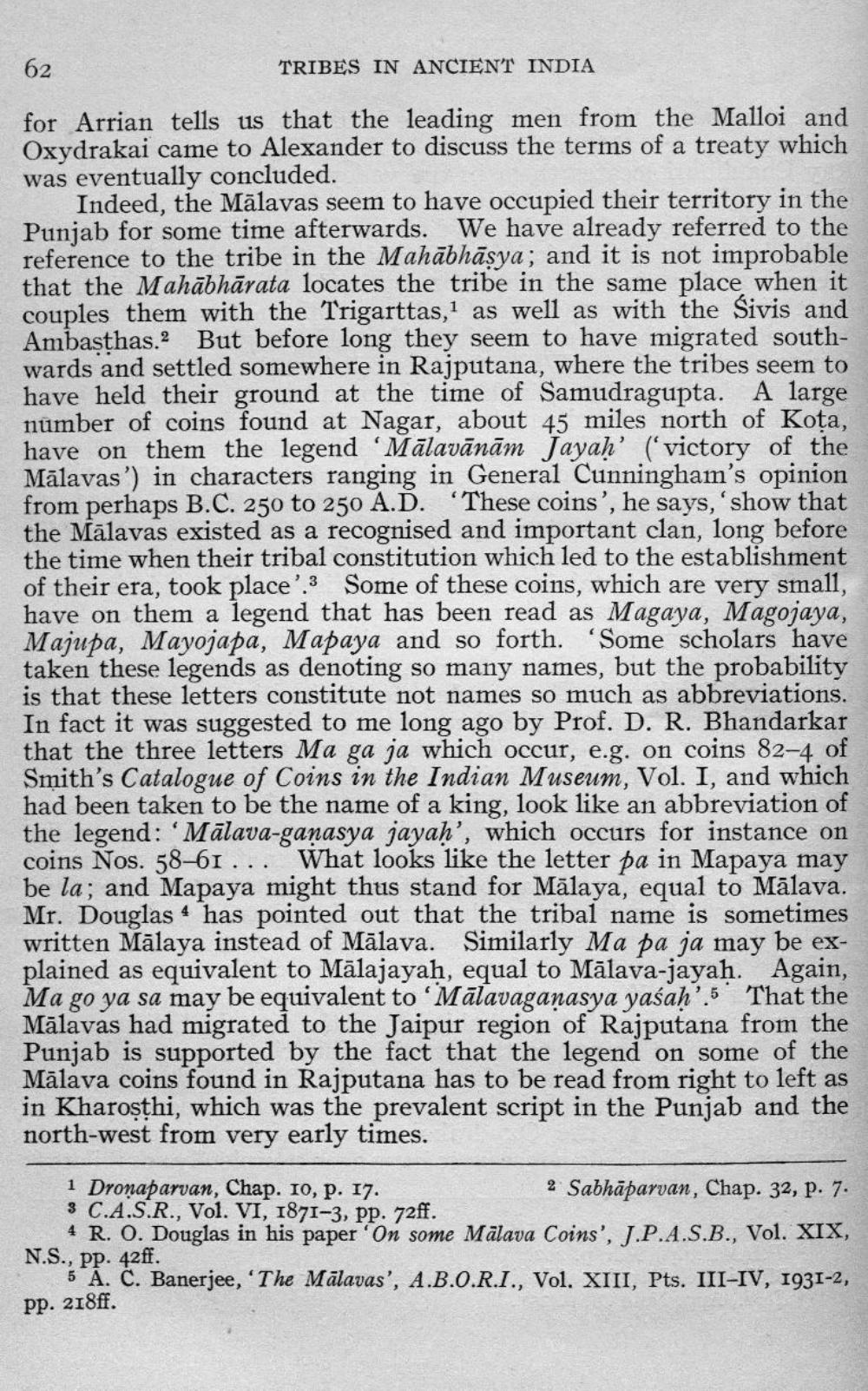________________
62
TRIBES IN ANCIENT INDIA
for Arrian tells us that the leading men from the Malloi and Oxydrakai came to Alexander to discuss the terms of a treaty which was eventually concluded.
Indeed, the Mālavas seem to have occupied their territory in the Punjab for some time afterwards. We have already referred to the reference to the tribe in the Mahābhāsya; and it is not improbable that the Mahābhārata locates the tribe in the same place when it couples them with the Trigarttas, as well as with the Sivis and Ambasthas.2 But before long they seem to have migrated southwards and settled somewhere in Rajputana, where the tribes seem to have held their ground at the time of Samudragupta. A large number of coins found at Nagar, about 45 miles north of Kota, have on them the legend 'Mālavānām Jayah' ('victory of the Mālavas') in characters ranging in General Cunningham's opinion from perhaps B.C. 250 to 250 A.Þ. "These coins', he says, 'show that the Mālavas existed as a recognised and important clan, long before the time when their tribal constitution which led to the establishment of their era, took place'.3 Some of these coins, which are very small, have on them a legend that has been read as Magaya, Magojaya, Majupa, Mayojapa, Mapaya and so forth. “Some scholars have taken these legends as denoting so many names, but the probability is that these letters constitute not names so much as abbreviations. In fact it was suggested to me long ago by Prof. D. R. Bhandarkar that the three letters Ma ga ja which occur, e.g. on coins 82-4 of Smith's Catalogue of Coins in the Indian Museum, Vol. I, and which had been taken to be the name of a king, look like an abbreviation of the legend: 'Mālava-ganasya jayah', which occurs for instance on coins Nos. 58-61 ... What looks like the letter pa in Mapaya may be la; and Mapaya might thus stand for Mālaya, equal to Mālava. Mr. Douglas 4 has pointed out that the tribal name is sometimes written Mālaya instead of Mālava. Similarly Ma pa ja may be explained as equivalent to Mālajayah, equal to Mālava-jayah. Again, Ma go ya sa may be equivalent to 'Mālavaganasya yasah'.5 That the Mālavas had migrated to the Jaipur region of Rajputana from the Punjab is supported by the fact that the legend on some of the Mālava coins found in Rajputana has to be read from right to left as in Kharosthi, which was the prevalent script in the Punjab and the north-west from very early times.
1 Dronaparvan, Chap. 10, p. 17.
2 Sabhāparvan, Chap. 32, p. 7. 3 C.A.S.R., Vol. VI, 1871-3, pp. 72ff.
4 R. O. Douglas in his paper "On some Malava Coins', J.P.A.S.B., Vol. XIX, N.S., pp. 42ff.
5 A. C. Banerjee, 'The Mālavas', A.B.O.R.I., Vol. XIII, Pts. III-IV, 1931-2,
Pp. 218ff.




